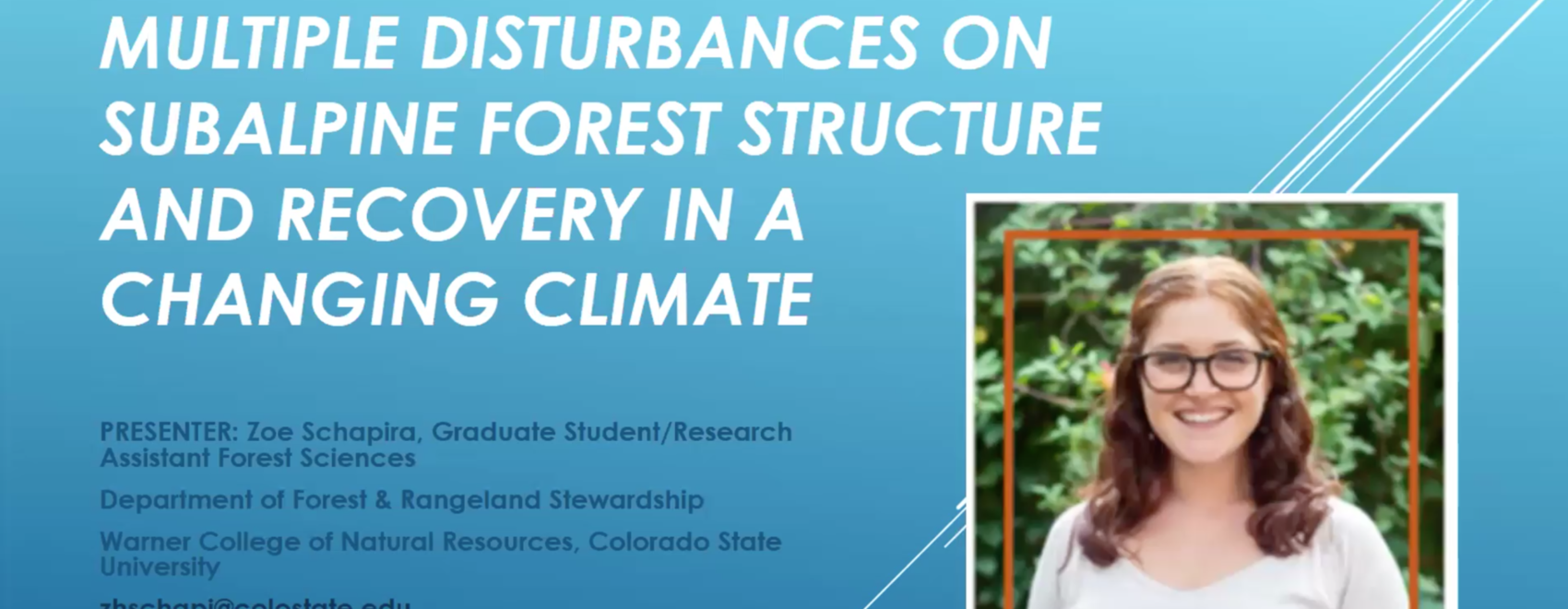On November 6th, 2020 SRFSN hosted a public webinar containing the graduate masters thesis presentation of Zoe Schapira, graduate student and research assistant in the Department of Forest and Rangeland Stewardship at Colorado State University.
In short, Zoe’s research looks into the synergistic effects of multiple disturbances on subalpine forest structure and recovery potential within the subalpine forests of Northern Colorado and Southern Wyoming. Due to shifts in global climate, the severity, size and frequency of climate-driven disturbances are increasing, inevitably causing disturbances to interact in time and space. Bark beetle epidemics and wildfires have historically shaped the disturbance regimes of western North American forests. Their interactive effects on forest stand conditions within subalpine forests dominated by Engelmann spruce and subalpine fir are inadequately understood, and proper management of these forest types requires an improved understanding of the interactions of these disturbance vectors.
Zoe’s conclusions are as follows. First, high-intensity and severity wildfires override the synergistic effects of multiple repeated disturbances on seedling regeneration. Second, seedling height is not a consistently reliable proxy for seedling age within regenerating subalpine forests. Finally, noting the propensity of Engelmann spruce and subalpine fir to establish in cool and moist growing conditions, there is considerable uncertainty about post-disturbance recovery and the persistence of spruce-fir forests in a warming and drying world.
To see Zoe’s public webinar presentation follow this link.

